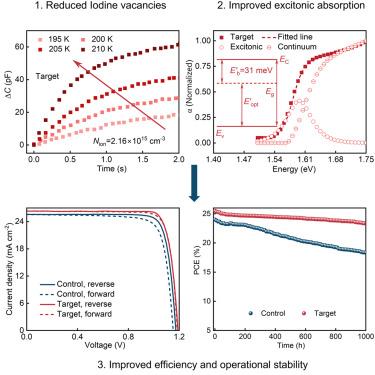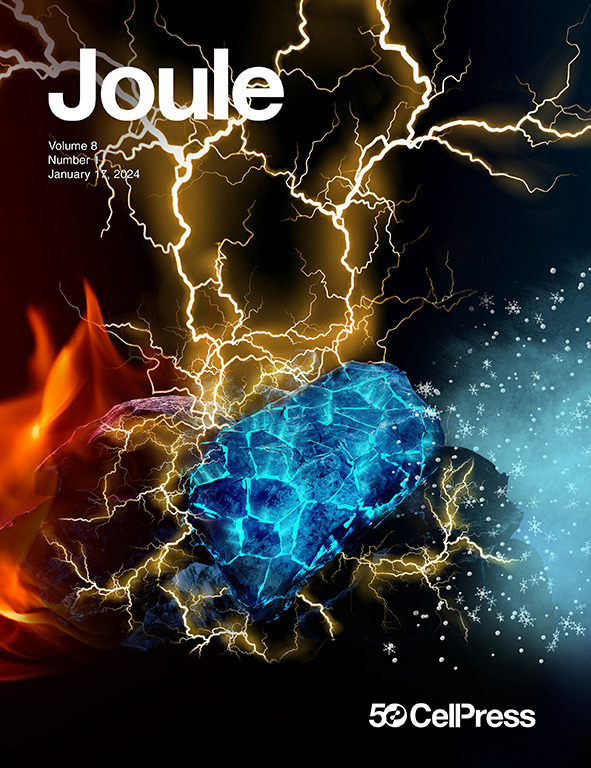Promising excitonic absorption for efficient perovskite solar cells
IF 38.6
1区 材料科学
Q1 CHEMISTRY, PHYSICAL
引用次数: 0
Abstract
Tuning the band gap of perovskites toward the ideal band gap enables the enhancement of the power conversion efficiency (PCE) of perovskite solar cells (PSCs). Here, we demonstrate that the optical band-gap narrowing can be achieved by employing the excitonic absorption in perovskites through tuning their exciton binding energy (Eb), which directly leads to a photocurrent gain and hence improves the PCE of PSCs. With combined theoretical and experimental studies, it is revealed that the Eb is deeply correlated with the density of vacancy defects in perovskites due to their potential screening effect. Using the precursor engineering, we enhance the Eb by decreasing the density of vacancy defects in perovskites films. As a result, the improved excitonic absorption in formamidinium lead iodide (FAPbI3) obviously broadens the spectral response and thus boosts the efficiency of the champion PSC up to 26.31% (certified 26.09%), mainly due to an enhanced photocurrent.


有望实现激子吸收的高效过氧化物太阳能电池
将过氧化物的带隙调谐到理想带隙可提高过氧化物太阳能电池(PSCs)的功率转换效率(PCE)。在这里,我们证明了可以通过调节激子结合能(Eb),利用包晶石中的激子吸收来实现光带隙的缩小,这直接导致了光电流的增益,从而提高了 PSCs 的 PCE。结合理论和实验研究,我们发现 Eb 与过氧化物中的空位缺陷密度密切相关,这是由于空位缺陷具有潜在的屏蔽效应。利用前驱体工程学,我们通过降低过氧化物薄膜中空位缺陷的密度来提高 Eb。因此,碘化甲脒铅 (FAPbI3) 中激子吸收的改善明显拓宽了光谱响应,从而将冠军 PSC 的效率提高到 26.31%(认证值为 26.09%),这主要是由于光电流的增强。
本文章由计算机程序翻译,如有差异,请以英文原文为准。
求助全文
约1分钟内获得全文
求助全文
来源期刊

Joule
Energy-General Energy
CiteScore
53.10
自引率
2.00%
发文量
198
期刊介绍:
Joule is a sister journal to Cell that focuses on research, analysis, and ideas related to sustainable energy. It aims to address the global challenge of the need for more sustainable energy solutions. Joule is a forward-looking journal that bridges disciplines and scales of energy research. It connects researchers and analysts working on scientific, technical, economic, policy, and social challenges related to sustainable energy. The journal covers a wide range of energy research, from fundamental laboratory studies on energy conversion and storage to global-level analysis. Joule aims to highlight and amplify the implications, challenges, and opportunities of novel energy research for different groups in the field.
 求助内容:
求助内容: 应助结果提醒方式:
应助结果提醒方式:


